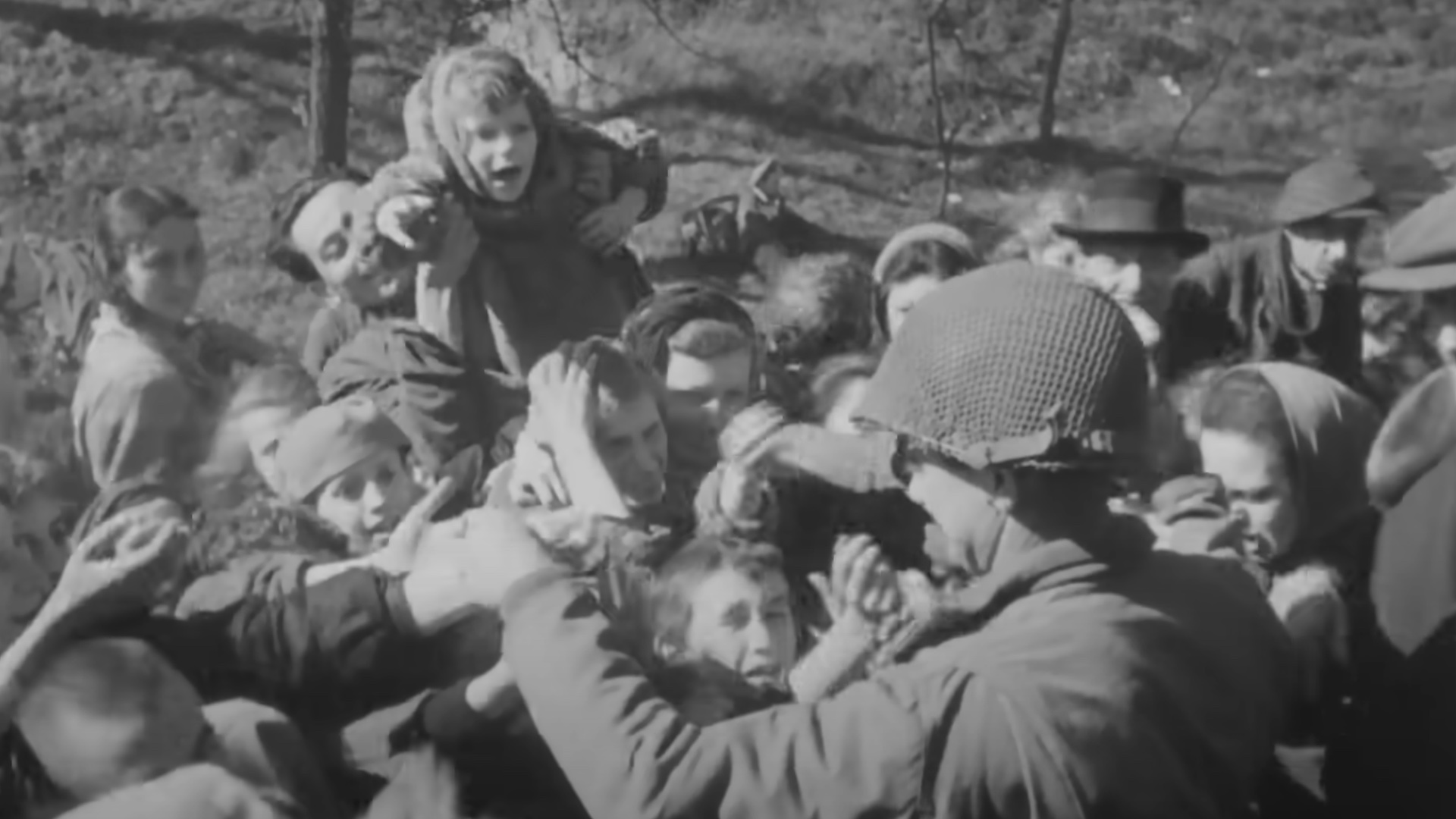

As the American Army fought its way across Germany in April 1945, soldiers encountered evidence of the evil and depravity of the Third Reich in the form of its horrifying concentration camps during the Holocaust. Recently, the National Archives released rare footage of one such encounter, capturing the day American soldiers liberated a train carrying thousands of prisoners from the Bergen-Belsen concentration camp.
Shot by the U.S. Army Signal Corps and dated April 17, 1945, the footage shows the prisoners — men, women, and children of all ages — milling around an abandoned train. Soldiers from the 743rd Tank Battalion and 30th Infantry Division can be seen moving through the crowd. One Captain stands atop a train car, handing out food.

Elsewhere, another soldier doing the same thing is mobbed by a crowd of mostly women and children. On the side of one train car, someone had written “Three cheers for America” and “Vive les U.S.A. et les Anglais.”
As they are shown around the train, the newly liberated prisoners can be seen tending to small fires or gathering their few belongings. Some offered smiles for the camera, many simply looked stunned.
As reported by Haaretz, the train in the film departed Bergen-Belsen on April 7, headed for the Theresienstadt concentration camp carrying 2,500 Jewish people from Hungary, Poland, Greece, and Slovakia. Many of them had been considered “privileged” and were being kept for potential prisoner exchanges. After six days, the train stopped near the town of Farsleben, about 10.5 miles from the city of Magdeburg. There, the guards fled, and the train was discovered by American soldiers.
Subscribe to Task & Purpose Today. Get the latest military news and culture in your inbox daily.
While this footage has rarely been seen, the story of the liberation of this train has been well documented in a book published in 2016 by Matthew Rozell, “A Train Near Magdeburg: A Teacher’s Journey into the Holocaust and the Reuniting of the Survivors and Liberators, 70 Years On.”
In 2001, Rozell — a high school history teacher in upstate New York — was interviewing local World War 2 veteran Carrol Walsh for an oral history project. At the end of the interview, Walsh’s family prodded him to talk about “‘the train’” he had liberated as a tank commander during the war.
Inspired by Walsh, and by some of the stunning personal photos another soldier, George Gross, provided, Rozell would go on to interview many of the prisoners who were freed that day and reunite them with some of their liberators.
“You are always expressing gratitude to me and [my unit]. But I do not believe gratitude is deserved, because we were doing what we, and the whole world, should have been doing — rescuing and protecting innocent people from being killed, murdered by vicious criminals,” Walsh wrote to one survivor from the train.
The latest on Task & Purpose
- Air Force shows off its Rapid Dragon cruise missile system on China’s doorstep
- The Pentagon didn’t refuse to pay $60,000 to fly fallen Marine Nicole Gee to Arlington [Updated]
- Bowe Bergdahl’s court-martial is overturned
- Everything we know about the U.S. Army soldier in North Korea
- Parris Island drill instructor found not guilty of Marine’s death during Crucible